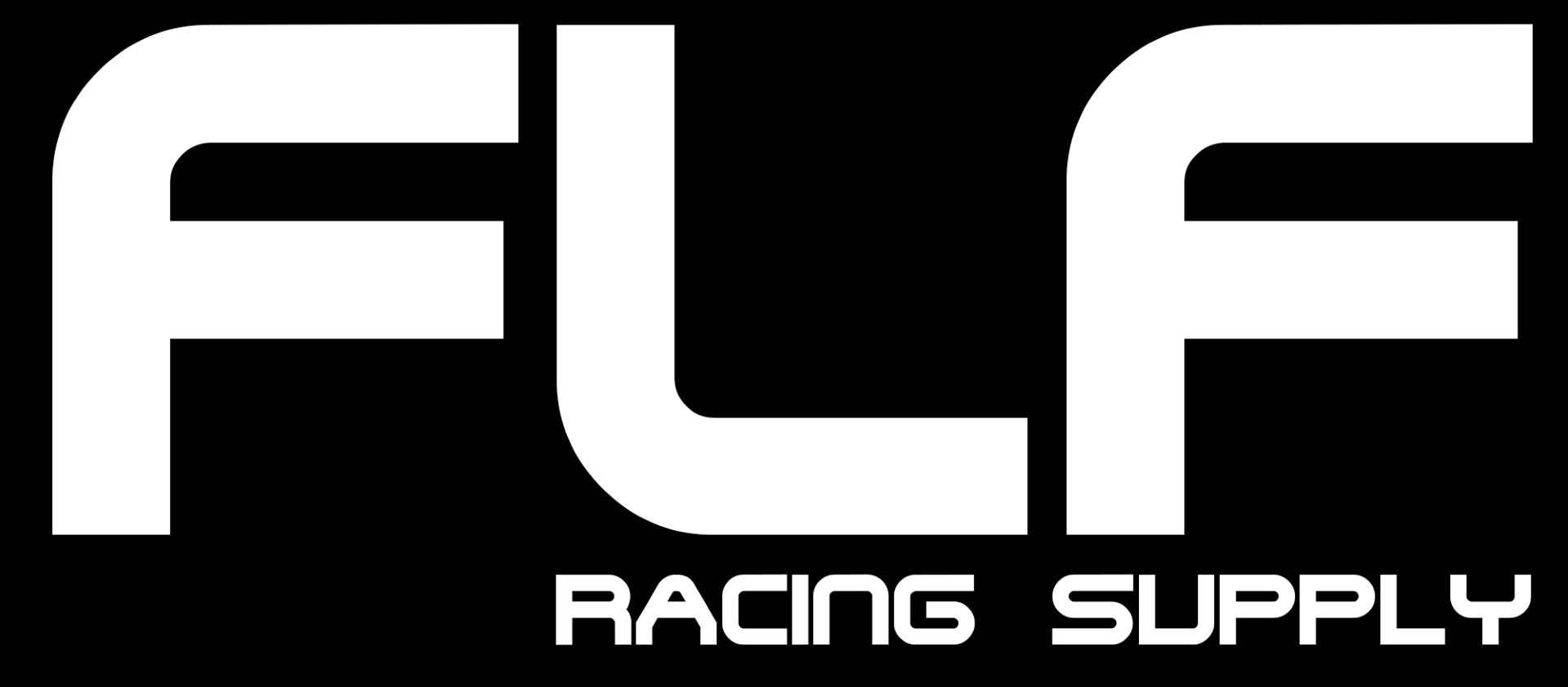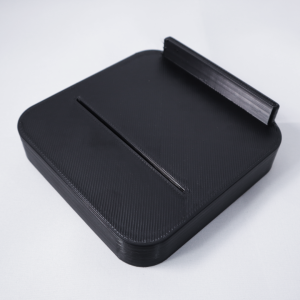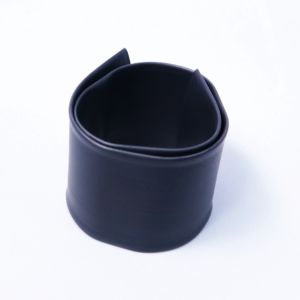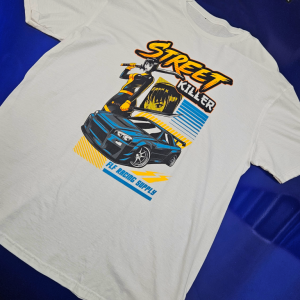New product at FLF! This 3D printed cutting guide will help you get near-perfect perpendicular cuts across your heat shrink sealing tubes, allowing you to get a nice clean presentation on your project’s hose systems!
Author: David Samani
New Product: Heat Protection Sealing Tube!
New product at FLF! Our Heat Shrink Sealing Tubes help to seal our Heat Protection Sleeves against the fitting or other component, helping to prevent heat or other elements from entering the sleeve and helps to keep things in place. Available in 1-foot roll sizes for any project, with longer bulk rolls to be made available soon!
New FLF Shirt On Sale!
New for 2024, the Street Killer shirt features super soft cotton and lets you rock out with a sick R34 GT-R. Show off your JDM pride!
Available in sizes from small to 2XL.
New Products Available from FLF!
90 Degree Fuel Cell Bulkhead
Installing a fuel cell bulkhead in a tight space? These can help make it a little easier to connect your fuel system’s AN fittings if you’re height restricted!
AN Male Union with 1/8″ NPT Port Adapter
45 & 90 Degree Angles Now Available
New for our AN Union adapters featuring an NPT Port, you can now get this product in 45 and 90 degree angles to accommodate additional plumbing system solutions.
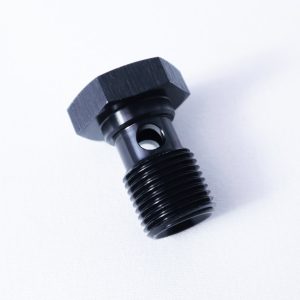
Major Revision to Banjo Bolts
We have revised our banjo bolt inventory to include a greater variety of sizes to accommodate additional plumbing solutions for our customers. Now included in our specifications are head diameter, overall and underhead lengths, and metric thread. Expanded standard thread banjo bolts will be made available soon for purchase as well.
Revolutionize your Workshop or Garage with our 3D Printed Wrench Rack!
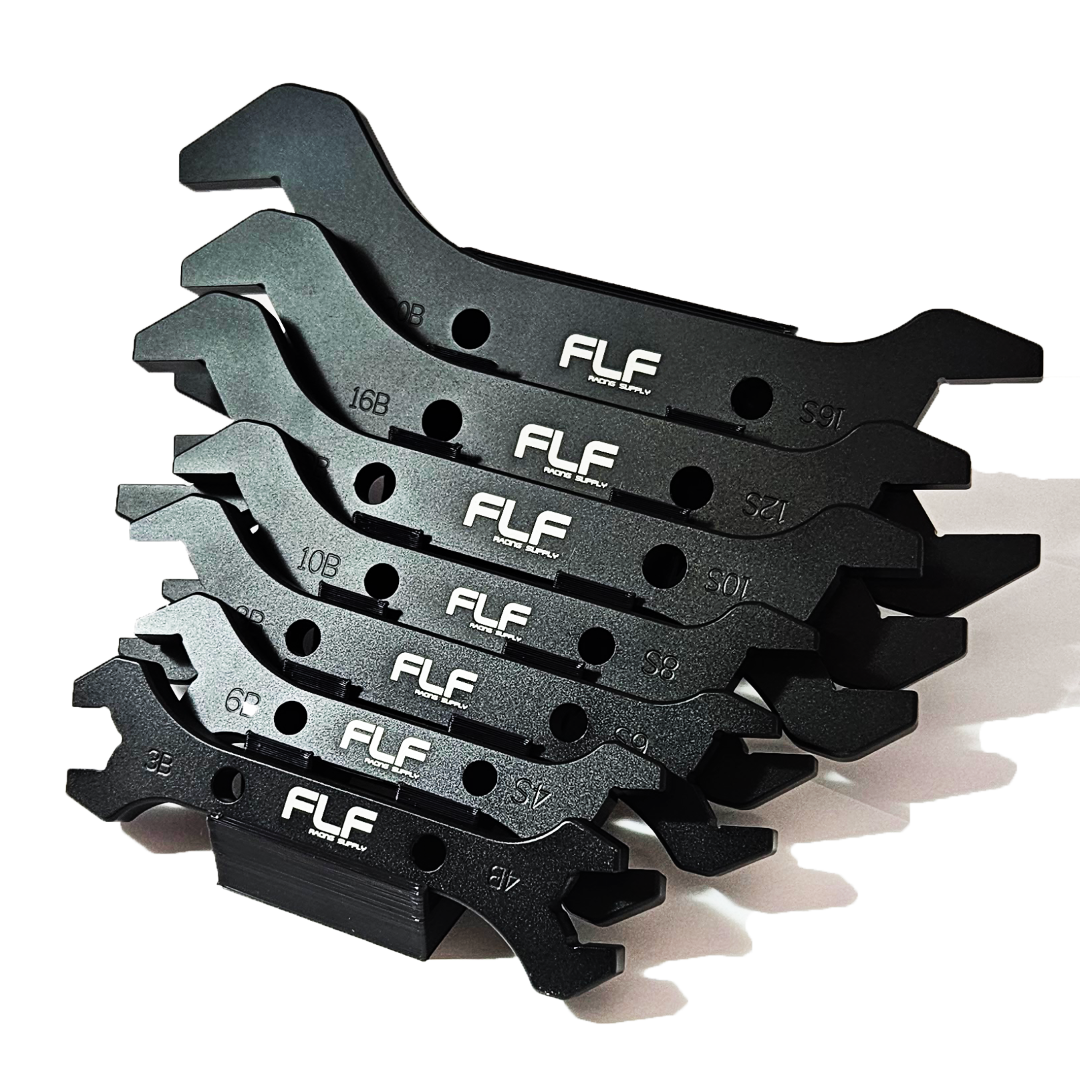
Tired of fumbling through your toolbox looking for the right AN wrench? Say goodbye to chaos and welcome organization into your workspace with our latest innovation, the 3D Printed AN Double-Headed Wrench Rack!
Designed to streamline your workspace, our wrench rack is a game-changer for DIY enthusiasts and professionals alike. Crafted with precision using advanced 3D printing technology, this rack offers a perfect blend of functionality and style.
No more wasted time searching for misplaced tools – our rack ensures that every wrench has its designated spot. The sleek and compact design allows you to maximize space while keeping your tools easily accessible. Whether you’re a mechanic or a hobbyist, this 3D printed rack is a must-have addition to your toolkit.
Upgrade your workshop today and experience the convenience of a clutter-free environment. Order your 3D Printed Wrench Rack now and take the first step towards a more efficient and organized workspace!
What is G-thread?
G-thread (from Gas or Gewinde) is a 55 degree parallel pipe thread. These can have male or female thread and o-rings can be used for low pressure lines under static load.
G-threads are NOT compatible with NPS, nor are they compatible with any tapered thread such as NPT or BSPT. The angle, shape, and thread-pitch of the threads are different, and attempting to use or force the use of these threads can damage the fitting, requiring replacement.
According to the current G-thread standard, the specs are identical to BSPP (British Standard Pipe Parallel) and can be used interchangeably. If, for example, you have a G1/8 fitting, you can use a 1/8″ BSPP fitting in its place.
You may encounter G-thread fittings or threaded holes on some European vehicles.
BSPP to AN adapter fittings are available on our website under the BSP Adapters product category.
What are Dry Break Quick Disconnects?
Dry break quick disconnect and fittings are vital components in motorsport applications. They allow for quick and easy fuel and oil changes during pit stops, reducing the amount of time spent in the pit lane and increasing the team’s chances of winning. But what exactly are they, and how do they work?
Dry break quick disconnect and fittings are a type of coupling system that allows for fast and easy connection and disconnection of fuel and oil lines. They are designed to eliminate spills and drips when disconnecting lines, which can be dangerous in a high-performance motorsport environment. They are typically made of lightweight and durable materials such as aluminum or stainless steel, and come in a variety of sizes and configurations to suit different motorsport applications.
The dry break quick disconnect and fittings system consists of two parts: the male and female halves. The male half is typically attached to the fuel or oil line, while the female half is attached to the fuel or oil tank. The two halves are designed to connect and disconnect quickly and easily, with no need for tools or special equipment.
The dry break quick disconnect and fittings system is ideal for motorsport applications where fast and efficient pit stops are essential. For example, in endurance races, where every second counts, a quick fuel or oil change can mean the difference between winning and losing. The system is also popular in drag racing, where speed and performance are crucial.
One of the main advantages of dry break quick disconnect and fittings is their ability to prevent spills and drips. This is particularly important in a motorsport environment, where a small fuel or oil spill can be dangerous. The system is designed to be completely leak-proof, meaning that fuel and oil will not escape when disconnecting the lines.
Another advantage of the system is its ease of use. With no need for tools or special equipment, the system can be quickly and easily connected and disconnected by pit crew members. This means that pit stops can be carried out quickly and efficiently, reducing the amount of time spent in the pit lane.
In conclusion, dry break quick disconnect and fittings are an essential component in motorsport applications. They offer a fast and efficient way to change fuel and oil lines during pit stops, while also preventing spills and drips. They are easy to use and can be quickly and easily connected and disconnected by pit crew members, making them an essential tool for any motorsport team looking to gain a competitive edge.
Is a motorsport-grade fuel filter important for my racecar?
In motorsports, having a reliable fuel system is crucial for performance and safety. One of the most important components in the fuel system is the fuel filter. A fuel filter’s main function is to remove any impurities, such as dirt, rust, and debris, from the fuel before it enters the engine. This helps to protect the engine from damage and ensures that the engine is running on clean fuel.
Motorsport fuel filters are designed to handle the high-performance demands and harsh conditions of motorsports. They are typically made from high-quality materials, such as aluminum or stainless steel, which can withstand high temperatures, pressures, and vibrations. Some of the fuel filters are designed to be reusable, while others are designed to be disposable.
There are a few different types of motorsport fuel filters available, each with their own set of advantages and disadvantages. The most common types of motorsport fuel filters are paper element filters, reusable element filters, and foam element filters.
Paper element filters are the most common type of fuel filter and are typically the most affordable. They are made from a pleated paper material that is designed to trap impurities and debris. They are disposable, which means they need to be replaced when they become clogged.
Reusable element filters, also known as washable filters, are another popular choice for motorsports. They are made from a metal mesh or wire material that can be cleaned and reused multiple times. They are more expensive than paper element filters, but they have a longer lifespan and can save money in the long run.
Foam element filters are similar to reusable element filters but are made from a foam material. They are also washable and reusable, and can filter out smaller particles than paper or metal element filters. However, foam element filters can absorb fuel and can become heavy, so they need to be checked regularly and cleaned when necessary.
When choosing a fuel filter for motorsports, it’s important to consider the type of engine, the type of fuel, and the conditions in which the vehicle will be used. For high-performance engines, a reusable or foam element filter may be a better choice as they can handle higher flow rates and filter out smaller particles. For vehicles that will be used in harsh conditions, a filter made from aluminum or stainless steel may be a better choice as they can withstand high temperatures, pressures, and vibrations.
In conclusion, motorsport fuel filters are an essential component of a high-performance fuel system. They remove impurities and debris from the fuel, protecting the engine from damage and ensuring that the engine is running on clean fuel. There are a few different types of motorsport fuel filters available, each with their own set of advantages and disadvantages, so it’s important to choose the right one for your specific application.
What are NPT fittings?
NPT fittings, also known as National Pipe Thread fittings, are a type of fitting commonly used in industrial, automotive, and plumbing applications. They are designed to provide a secure, leak-free connection for fluid and gas systems, and are known for their durability and versatility.
NPT fittings are designed to connect to pipes or hoses that have NPT threads, which are a specific type of thread that is tapered and designed to create a tight seal when connected. NPT fittings come in a variety of sizes, styles, and materials, which allows them to be used in a wide range of applications.
One of the main advantages of NPT fittings is their ability to handle high pressures and temperatures. They are typically made from brass, stainless steel, or carbon steel, which are strong and durable materials that can withstand the high pressures and temperatures found in industrial, automotive, and plumbing applications. Additionally, NPT fittings are designed to be reusable, which means they can be disconnected and reconnected multiple times without losing their seal.
Another advantage of NPT fittings is their versatility. They come in a variety of sizes and styles, which allows them to be used in a wide range of applications. For example, they are commonly used in compressed air systems, fuel systems, water systems, and oil systems. They can also be used to connect pipes, hoses, valves, and other components together.
When it comes to selecting NPT fittings, the first thing to consider is the size of the fitting. NPT fittings are available in a range of sizes, from 1/8″ to 2″, with 1/8″ being the smallest and 2″ being the largest. The size of the fitting you choose will depend on the size of the pipe or hose you are using, as well as the pressure and flow rate of the fluid you are working with.
Another important factor to consider when selecting NPT fittings is the type of fitting. There are a few different types of NPT fittings available, including straight, elbow, and tee fittings. Straight fittings are used to connect two pipes or hoses together, while elbow fittings are used to change the direction of a pipe or hose. Tee fittings are used to split a line into two or more lines.
Lastly, it’s important to consider the material of the fitting. NPT fittings are commonly made from brass, stainless steel, or carbon steel. Brass fittings are corrosion-resistant and suitable for most applications. Stainless steel fittings are stronger and more durable, and are typically used in high-pressure and high-temperature applications. Carbon steel fittings are strong and durable and typically used in heavy-duty industrial applications.
In conclusion, NPT fittings are a popular choice for industrial, automotive, and plumbing applications for their strength, durability, and versatility. They are designed to handle high pressures and temperatures, and come in a variety of sizes, styles, and materials. When selecting NPT fittings, it is important to consider the size, type, and material of the fitting to ensure that it is suitable for your application.
What are AN fittings?
AN fittings, also known as Army-Navy fittings, are a type of fitting used in high-performance automotive and racing applications. They are designed to provide a secure, leak-free connection for fuel, oil, and other fluid systems, and are popular among car enthusiasts for their strength, durability, and versatility.
One of the main advantages of AN fittings is their ability to handle high pressures and temperatures. They are typically made from aluminum or steel, which are strong and lightweight materials that can withstand the high pressures and temperatures found in high-performance engines. Additionally, AN fittings are designed to be reusable, which means they can be disconnected and reconnected multiple times without losing their seal.
Another advantage of AN fittings is their versatility. They come in a variety of sizes and styles, which allows them to be used in a wide range of applications. For example, they are commonly used in fuel systems, oil systems, brake systems, and intercooler systems. They can also be used to connect hoses, lines, and other components together.
When it comes to selecting AN fittings, the first thing to consider is the size of the fitting. AN fittings are available in a range of sizes, from -4 to -20, with -4 being the smallest and -20 being the largest. The size of the fitting you choose will depend on the size of the hose or line you are using, as well as the pressure and flow rate of the fluid you are working with.
Another important factor to consider when selecting AN fittings is the type of fitting. There are a few different types of AN fittings available, including straight, elbow, and tee fittings. Straight fittings are used to connect two hoses or lines together, while elbow fittings are used to change the direction of a hose or line. Tee fittings are used to split a line into two or more lines.
Lastly, it’s important to consider the material of the fitting. AN fittings are commonly made from aluminum or steel. Aluminum fittings are lightweight, corrosion-resistant, and suitable for most applications. Steel fittings are stronger and more durable, and are typically used in high-pressure and high-temperature applications.
In conclusion, AN fittings are a popular choice among car enthusiasts and racers for their strength, durability, and versatility. They are designed to handle high pressures and temperatures, and come in a variety of sizes, styles, and materials. When selecting AN fittings, it is important to consider the size, type, and material of the fitting to ensure that it is suitable for your application.
